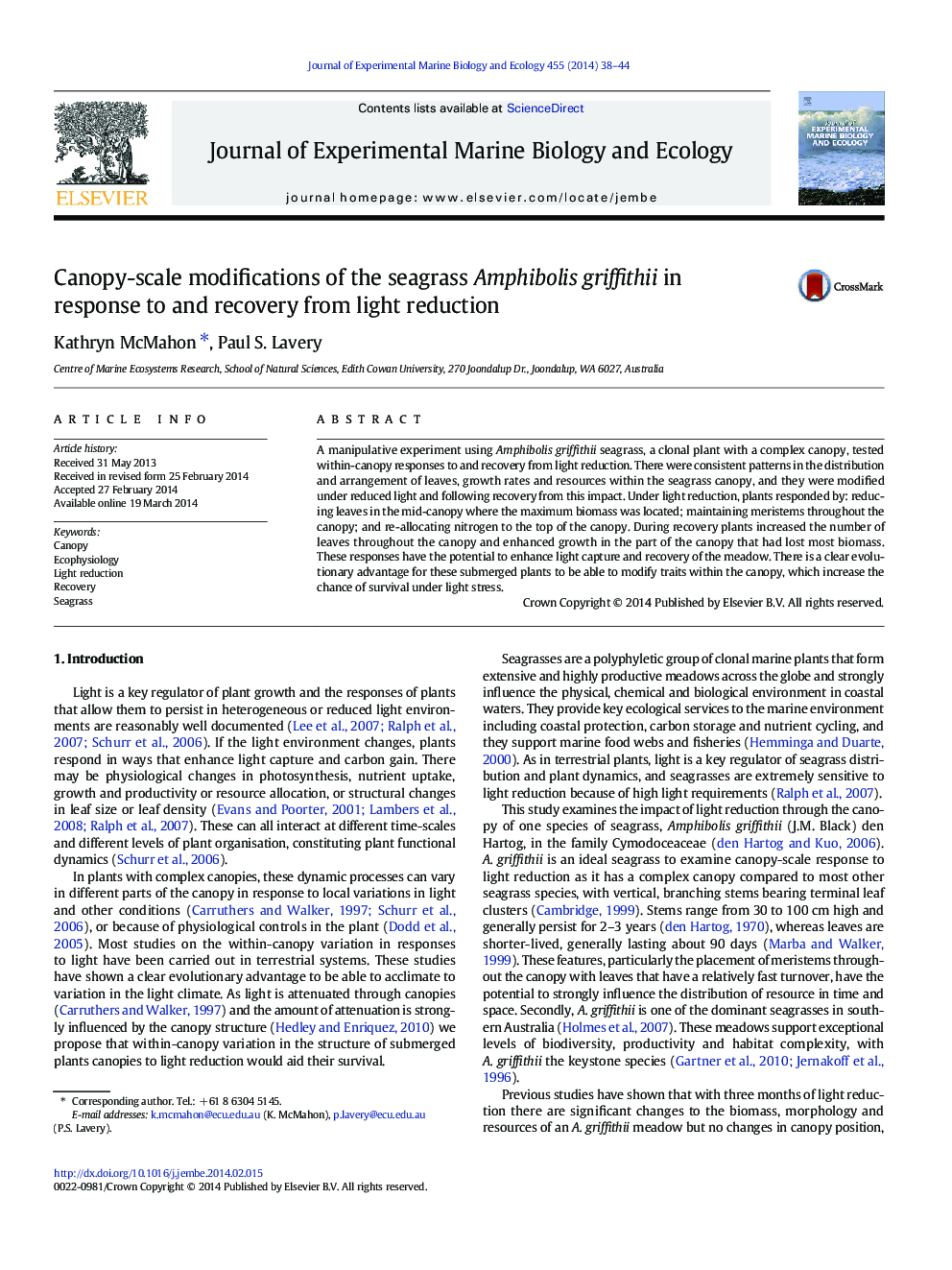| Article ID | Journal | Published Year | Pages | File Type |
|---|---|---|---|---|
| 6304167 | Journal of Experimental Marine Biology and Ecology | 2014 | 7 Pages |
Abstract
A manipulative experiment using Amphibolis griffithii seagrass, a clonal plant with a complex canopy, tested within-canopy responses to and recovery from light reduction. There were consistent patterns in the distribution and arrangement of leaves, growth rates and resources within the seagrass canopy, and they were modified under reduced light and following recovery from this impact. Under light reduction, plants responded by: reducing leaves in the mid-canopy where the maximum biomass was located; maintaining meristems throughout the canopy; and re-allocating nitrogen to the top of the canopy. During recovery plants increased the number of leaves throughout the canopy and enhanced growth in the part of the canopy that had lost most biomass. These responses have the potential to enhance light capture and recovery of the meadow. There is a clear evolutionary advantage for these submerged plants to be able to modify traits within the canopy, which increase the chance of survival under light stress.
Related Topics
Life Sciences
Agricultural and Biological Sciences
Aquatic Science
Authors
Kathryn McMahon, Paul S. Lavery,
